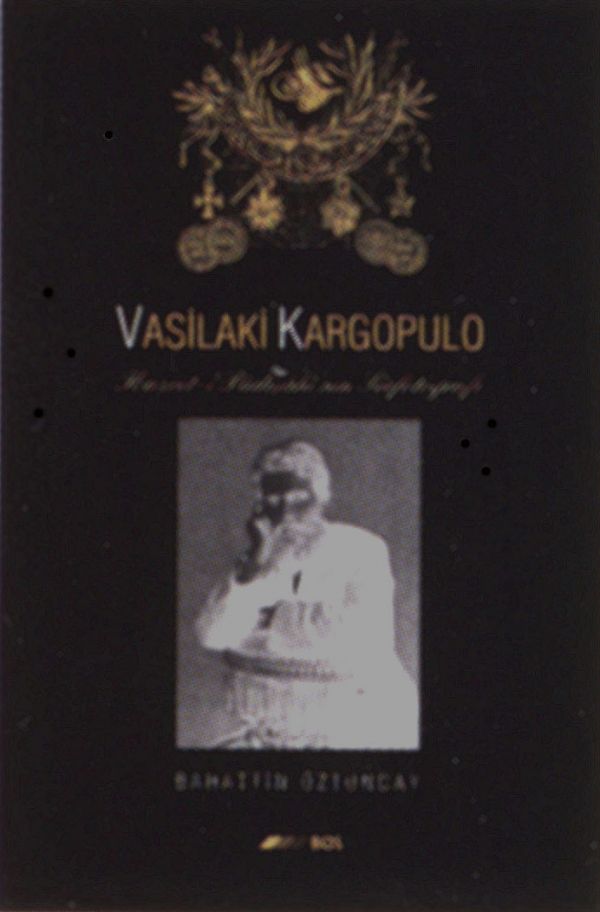Buy or gift a digital subscription and get access to the complete digital archive of every issue for just £18.99 / $23.99 / €21.99 a year.
Buy/gift a digital subscription Login to the Digital Edition
Vasilaki Kargopoulo: Photographer to His Majesty the Sultan
From the time of its invention, photography had a particular appeal for royalty: dynasties found it a new and unusually effective weapon in their constant efforts – as old as monarchy itself – to propagate their own image. For the dynasties of the Middle East, photography had the added advantage of propagating an image of dignified modernity. It could also help them see what distant, unvisited corners of their domains looked like.
In the autumn of 1839, only a few months after the first public demonstration of the new art form in Paris, French photographers gave Kavalali Mehmed Ali Pasha a private view in Alexandria. Within a short while, professional photographers had established studios in Cairo and Constantinople, and the Ottoman Sultans and Caliphs of all the Muslims were employing their own court photographers, just like their fellow-monarchs in Western Europe.
Bahattin Öztuncay’s new book, Vassilaki Kargopoulo: Photographer to His Majesty the Sultan, is devoted to one such photographer, an Ottoman Greek who opened a studio in Beyoglu, near the Russian embassy, in 1850.
Many Greeks were employed in the service of Sultan Abdülhamid II: for example, his doctor, Spiridion Mavroyennis, and his foreign minister, Alexander Karatheodory. In 1879 Vassilaki (or Basile) Kargopoulo was appointed Photographe de Sa Majesté Impériale le Sultan, with the right to display the Sultan’s tugra, or monogram, on his business card.
Over the next few years he created a unique visual record of the Ottoman Empire in its last years of glory. His subjects included Gazi Osman Pasha, defender of Plevna against the Russians in 1877; princes (including the future sultans Mehmed V and VI, as beardless young men); princesses; mevlevi and Bektashi sheikhs; the Bulgarian Exarch and the Orthodox Patriarch; street sellers; palace interiors and views of the Bosphorus, including what would appear to be the entire Ottoman fleet, moored off Büyükdere. Unlike his predecessors and sucessors, however, Abdülhamid II, for reasons best known to himself, was not photographed. He may have considered it inappropriate for the Caliph.
When Kargopoulo died of a heart attack, two months after receiving a gold medal for fine arts on January 29, 1886, he was succeeded as court photographer by his son, Konstantin Kargopoulo. In the mysterious ways of the Yildiz Palace, however, Konstantin lost the job in 1888. In 1895 the studio in Beyoglu was closed and the family went to live in Aydin.
Bahettin Öztuncay is an expert on nineteenth-century photography in the Ottoman Empire who has already written on two even earlier photographers of Constantinople from the 1850s: James Robertson and Ernest de Caranza. His latest work contains not only 259 old photographs but also a detailed discussion of the technical processes of photography as practised in Constantinople. It will delight all those who feel the wistful charm of the Ottoman Empire in the age of the fez and the stambouline.
Philip Mansel
1. STANDARD
Standard, untracked shipping is available worldwide. However, for high-value or heavy shipments outside the UK and Turkey, we strongly recommend option 2 or 3.
2. TRACKED SHIPPING
You can choose this option when ordering online.
3. EXPRESS SHIPPING
Contact subscriptions@cornucopia.net for a quote.
You can also order directly through subscriptions@cornucopia.net if you are worried about shipping times. We can issue a secure online invoice payable by debit or credit card for your order.

Cornucopia works in partnership with the digital publishing platform Exact Editions to offer individual and institutional subscribers unlimited access to a searchable archive of fascinating back issues and every newly published issue. The digital edition of Cornucopia is available cross-platform on web, iOS and Android and offers a comprehensive search function, allowing the title’s cultural content to be delved into at the touch of a button.
Digital Subscription: £18.99 / $23.99 (1 year)
Subscribe now